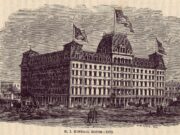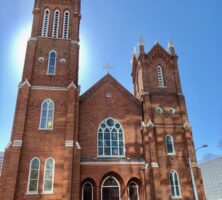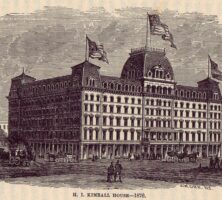William H. Parkins was the most significant architect practicing in Georgia in the immediate decades following the Civil War (1861-65). A New Yorker who had lived in South Carolina in the 1850s, he returned to the postbellum South and settled in Atlanta. There Parkins started the state’s most successful architectural business, which lasted until his retirement in the late 1880s.
As Atlanta grew in the postwar years, Parkins formed a number of business partnerships and gained the commissions for the most prestigious buildings in Georgia. The design work was generally Italianate, Second Empire, or a combination of the two, as in the Kimball House Hotel. Along with Atlanta’s Shrine of the Immaculate Conception (1873-80) and the First United Methodist Church (1870) in the Gothic revival style, these buildings established Parkins as the state’s leading architect. As late as the early 1880s when Parkins was in partnership with Alexander Bruce, he was still producing significant buildings with Mansard roofs and Italianate details, such as the courthouses for Fulton and Hancock counties.
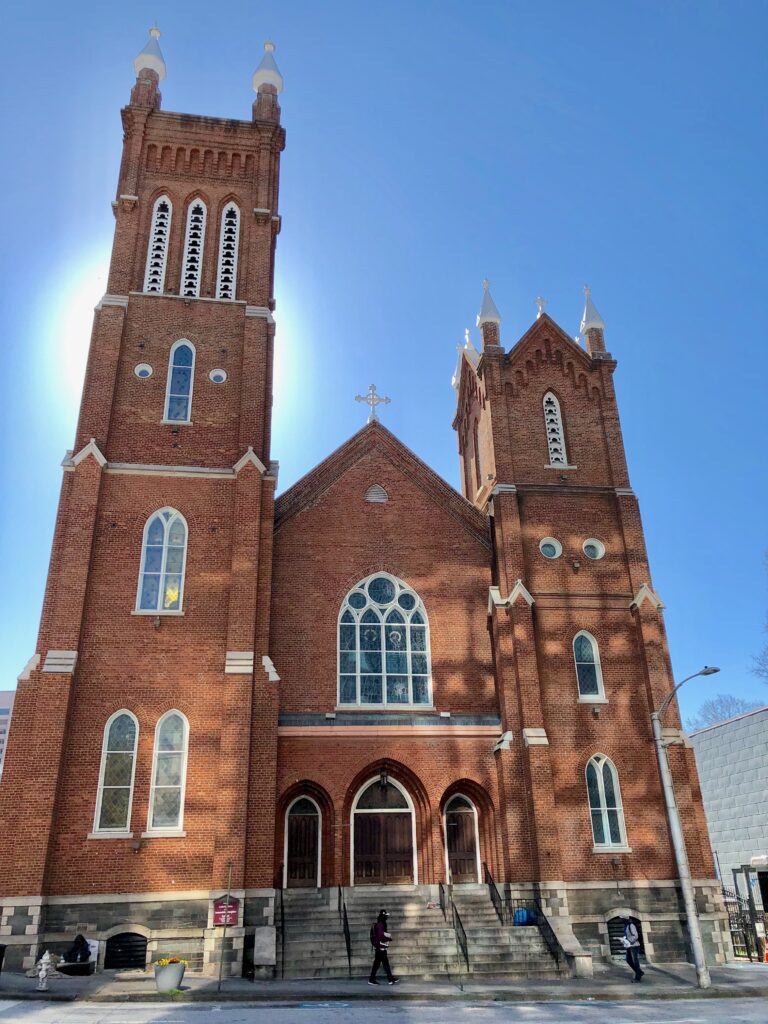
Image from Warren LeMay
He also produced buildings in other popular styles. In Randolph County (site of his retirement “plantation”), Parkins designed a Queen Anne/shingle style college building and courthouse with strong Romanesque revival features. In Atlanta he produced a Moorish style synagogue and a wide array of business buildings in a High Victorian style, sometimes with Gothic revival details. (The 1880 Young Men’s Library Building was a good example.)
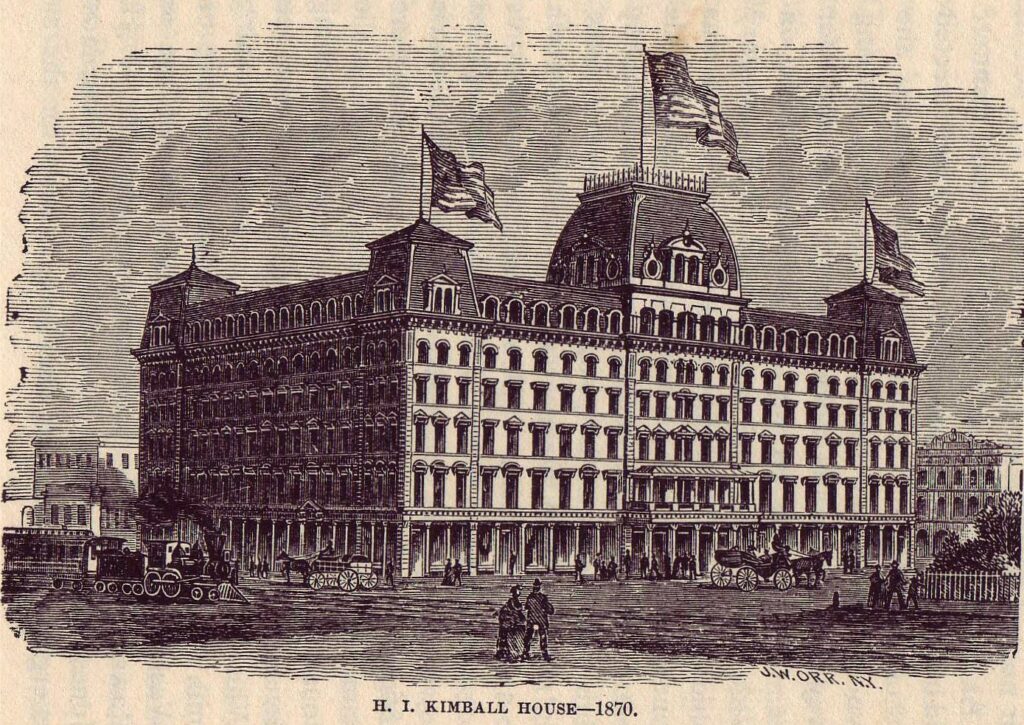
Image from Jolomo~commonswiki
It was as a businessman, however, that the architect was most influential. Parkins expanded his practice by aggressively gaining commissions throughout Georgia and in several surrounding states. He also established various related businesses, including one in the 1870s with William Jennings to sell building supplies, the Atlanta Construction Company of 1887, and a partnership with Lorenzo Wheeler and Hannibal Kimball to build the new Kimball House Hotel (the original burned in 1883) in 1884-85 and develop suburban property. Along with Wheeler, Parkins also offered an interior decorating service—something new to Georgia. Thus he was not only a prominent designer but also a forerunner to later Georgia architectural firms that were run as multifaceted businesses. This trend helped make the state a regional powerhouse in the field.


